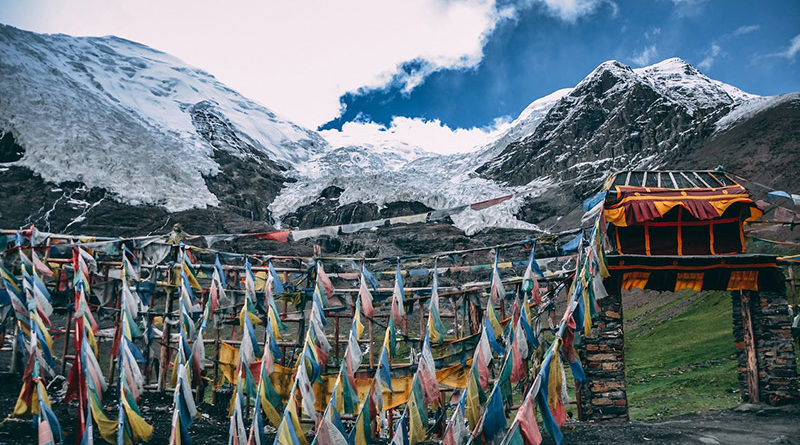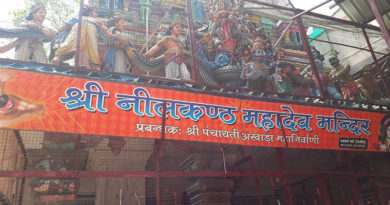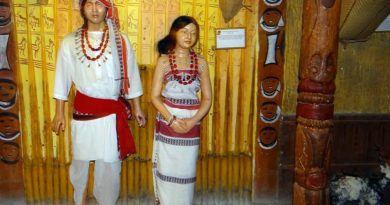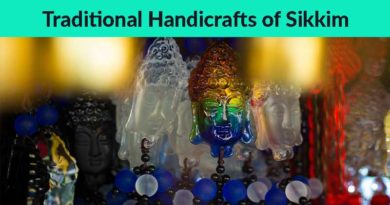Tibet: The Extensive Guide to The Roof of the World
Tibet, a region located in Himalayas, is the highest habitable region on Earth. As it’s located between two of the highest mountain ranges in the world – Mount Everest and K2, people often call it the ‘Roof of the World’.
Surrounded by breathtaking mountains, lush greenery, and beautiful architecture, Tibet is heaven on Earth. Moreover, Tibet is also extremely rich in culture and heritage. The spirituality here knows no bounds which is why every traveler, looking for some solace and peace, should visit this place.
In this blog post, we have essentially covered everything if you’re willing to know more about Tibet. So, read on!
The History of Tibet
Tibet has an extensive past of about 4000 years. Yet most of the history before the introduction of Buddhism in Tibet is unknown.
Now, according to some ruins found in the Qamdo region in East Tibet, it seems that the early human inhabitation started around 4000 to 5000 years ago.
However, towards the end of the 8th Century CE, a Tibetan king, named Trisong Detsen, invited two Buddhist monks and asked them to convert some Buddhist texts into the Tibetan language. This led to the start of Buddhism in Tibet. However, it soon waned.
During the 10th to 12th centuries, Buddhism again became popular in Tibet.
In the 13th and 14th centuries, the Mongols invaded Tibet and established their control over the entire region. But, during the period between the 14th to 18th centuries, Tibet got independence and was ruled by five successive families.
Between the 18th and 19th centuries, the establishment of the Qing rule took place. However, from the 20th century, China annexed the entire region of Tibet due to which many locals and clergy people escaped.
Today, Tibet is an autonomous region governed by China.
The Rich Culture and Heritage of Tibet
Tibet has an amalgamation of cultures as it’s influenced by the various countries around it, including India, China, and Nepal. Yet, due to its remote location near the Himalayas, has offered the locals a chance to keep their own culture intact too.
However, Tibetan Buddhism has a major role to play in the entire Tibet culture. From arts to architectural heritage to festivals, everything has the element of Buddhism.
About Tibetan Art and Craft:
When it comes to art, you can characterize Tibetan art as a form of religious art. Almost every artwork is inspired by various Buddhist tales and spirituality.
The Tibetan craft is world-famous for its rugs and paintings. The Tibetan rugs are made up of high-quality wool from the Tibetan highland’s sheep. Moreover, unlike other places, Tibetan rugs are mostly made from hand and have a unique feel to them.
Additionally, the Tibetan paintings are famous too, with the depictions of various monks, deities, and mandalas on cotton or linen materials. These paintings are often known as ‘Thangkas’ – meaning something that you can easily roll.
About Tibetan Architecture:
Tibetan architecture is world-renowned due to its intricateness and pattern. Most of the architecture is influenced by Chinese, Buddhist, and Indian styles.
Today, you can find many stupas, prayer wheels, and gompas in Tibet. These reflect a Buddhist approach. You may also find houses built on elevated ground, facing the South direction. These houses have flat ceilings to conserve heat and many windows to receive sunlight.
Tibet also has a monastic architectural style due to the various monasteries (around 6000) present there such as:
- Sera Monastery
- Drepung Monastery
- Ganden Monastery
- Samye Monastery
- Tashilhunpo Monastery
All of these monasteries are the perfect place to practice spirituality and to experience peace and solace in Tibet. You can also get to see and learn various things from the monks here.
Tibet also has a World Heritage Site – the Potala Palace, which was the residence of the Dalai Lamas. This palace has over one thousand rooms and thirteen levels with many grand portraits and statues of Buddha.
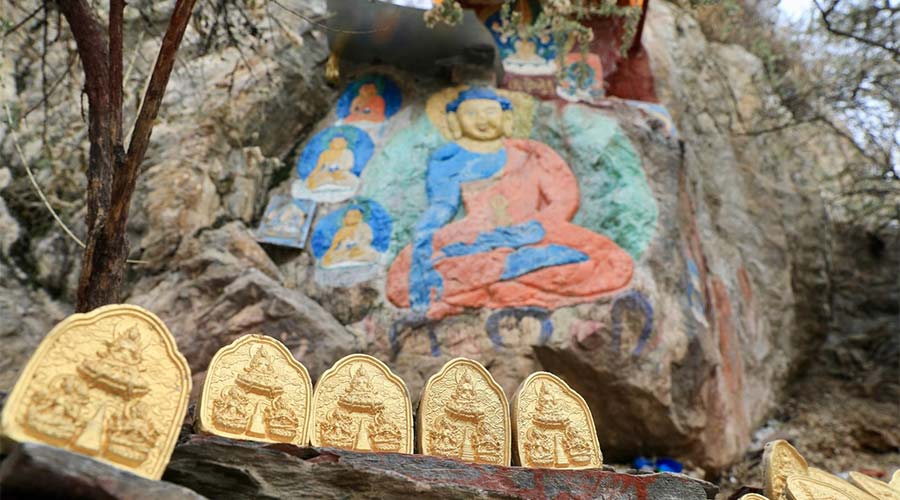
Spirituality and Wellness in the Tibetan Culture
Spirituality goes hand-in-hand with the people of Tibet. Their entire lifestyle is quite spiritual due to the instilled values of Buddhism.
Today, you can find various educational monasteries such as Sera and Drepung where monks are taught the spiritual way of life. Hence, many of the Tibetan youth spend their time in these monasteries mastering control over their mind and soul.
Moreover, the Tibetan people spend at least some of their day praying at the temples, circling the stupas, or meditating at their own placeto attain spirituality.
The various festivals, dances, music, and art of Tibet symbolizes spirituality too as major themes of these things revolve around the mind and consciousness.
Spirituality has a big role to play in the health and wellness of the Tibetan people. The various healing practices are more holistic in nature as the Tibetan people target the healing of the mind – which they often consider as the main cause of diseases. Typically, the monks or lamas assist the traditional Tibetan doctors to heal a person.
The Tibetan Traditions, Dance, and Games
The tradition of Tibet is quite rich due to its extensive history and past. Various unique customs aren’t seen in any other country. Most of these customs and traditions are based on the principles of Buddhism.
Whenever you’re in Tibet, you may see the colored flags as a part of their tradition. This is because the early Tibetans believed that these colored flags have healing properties. Hence, these flags are kept across the region to maintain the health and harmony of people.
You may also find Mani stones and Yak heads around Tibet. The Mani stones are kept in various locations as a place of worship where temples aren’t accessible. The locals move around these Mani stones in a clockwise direction to pray and show devotion to the deities.
Moreover, the locals also worship the yak heads due to various reasons. One, yaks offer transportation and food to the people of Tibet. Two, these animals also have significance in Tibetan mythology. Apart from the religious traditions, the Tibetans also have elaborate cultural traditions for marriage and death. For instance, Tibetans follow sky burial wherein the corpse is disposed of in a way that it’s devoured by the vultures.
Dances of Tibet:
Tibetan folk dances are an integral part of their tradition and culture. It’s one of those regions where you will see different types of dances in various ceremonies, including festivals, rituals, and family celebrations.
Most dances are based on various themes like love, folk, marriage, social gathering, and even their Buddhist culture. Some of the most popular dances of Tibet include:
- Tibetan Cham Dance
The Tibetan Cham Dance is one of the most popular dances, performed in various monasteries, during festivals.
Cham dance is quite popular during the time of the Saga Dawa festival due to the significance it holds. This dance is a type of meditative dance where monks wear masks and depict the teachings of Buddhism.
- Tibetan Drum Dance
As the name suggests, Tibetan drum dance consists of men and women performing with drums. It is usually of two types depending on the region where it originated – Dro dance and Relpa dance.
In the Dro dance, a head man is wearing a mask, and a few other dancers with the drum underneath their arms. They have to beat it while dancing. Now, in the Repla dance, women carry drums whereas men carry bells while dancing.
Overall, this dance is extremely entertaining to watch but requires years of practice and expertise.
- Tashi Sholpa
The Tashi Sholpa is an important dance of Tibet as it’s the first one performed at the major cultural ceremonies.
All the dancers wear a white mask, just like the one worn by Thangtong Gyalpo, a saint who lived for around 140 years. Hence, many people consider it auspicious to wear a white mask for dances.
- Tibetan Folk Dance
Apart from the above-mentioned dances, each region in Tibet has its own special dance, performed in various ceremonies and for celebrations too. For instance, Nangma Toeshey is a popular dance style in Lhasa.
Games of Tibet:
Apart from the spirituality in Tibet, games, and sports are also given a lot of importance. Tibet has its own sporty side that is quite unknown to the world.
There are many competitions and events based on these sports. Moreover, there are even festivals dedicated to sports, like horse racing at times! So, let’s discover some of the most popular Tibetan games and sports:
- Archery
Archery is one of the most popular games in Tibet and is inspired by the art of hunting.
Today, there are many archery contests and events taking place in Tibet. There’s also a Horse Racing and Archery Festival celebrated there in August.
The special aspect of Tibetan archery is the unique type of arrows used in the game.
- Yak Racing
Just like horse-racing events, there are yak-racing events too. However, as yaks get tired easily, these races are usually of short distances.
- Horse Racing
Horse racing is another important sport in Tibet, owing to its popularity and significance in festivals.
These races take place in the agricultural part of Tibet where the young and skilled horse riders take part in various horse racing competitions.
The horse racing festival is also one of a kind where singers and dancers perform to cheer the riders.
- Rock Carrying
Rock carrying has become a sport to judge the strength of various contenders. First, it was just an informal competition between the workers but soon, it gained popularity. Now, you have various rock carrying competitions where people can show off their strengths! There are many more sports and games involved here too, such as wrestling, tug of war, horsemanship, Gyiren, and many more.
The Main Festivals of Tibet
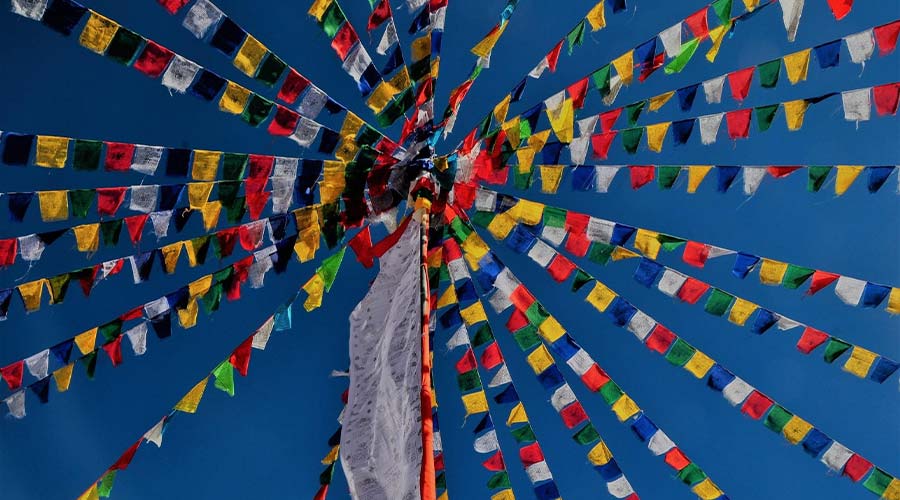
Tibet isn’t just home to natural beauties, like the Himalayas, but it also has various cultural and religious festivals due to its rich Buddhist heritage. Most festivals are calculated as per the Lunar calendar.
So, if you want to experience the true essence of Tibet, you should try visiting the place during these festivals:
1. Tibetan New Year or Losar
Month: February or March
The Tibetan New Year or Losar is one of the most important festivals of Tibet. The dates vary depending on the Tibetan Buddhist Calendar but most commonly, it’s held in the months of February or March.
It’s believed that the natives used to celebrate Losar to please the holy spirits by offering gifts to them, such as incense. Hence, today also, the locals offer gifts to the monks throughout the region.
The festival of Losar is celebrated with full enthusiasm and joy in Tibet for three days. There are a lot of celebrations involved, with delicious Tibetan food, firecrackers, folk dances, and gifts as well. The locals usually treat themselves to Guthuk – a traditional Tibetan dish during this festival.
2. Saga Dawa
Month: May or June
Due to the rise of Buddhism in Tibet, Saga Dawa has a major significance today. It’s because this festival is considered the birth time of Buddha. Hence, Saga Dawa is celebrated for an entire month.
During this festival, there is a sense of peace, helpfulness, and thoughtfulness across the entire Tibetan region. The locals refrain from killing animals for meat. Moreover, they also offer help to the poor and the less fortunate.
Apart from this, you can experience the spiritual side of Tibet during this month-long festival in the Lhasa region. The locals spend their time praying at the temples, lighting lamps, and performing kora – a type of spiritual pilgrimage. The atmosphere is not just enlightening but therapeutic as well.
3. Nagqu Horse Racing Festival
Month: August
If you’re into horse racing, you shouldn’t miss out on this grand festival. As horse racing is quite a popular sport in Tibet, many festivals are revolving around it. However, the Nagqu Horse Racing Festival is one of the most popular ones.
This two-week-long festival is usually celebrated in grassland, located 186 miles north of Lhasa. It features not just horse-racing competitions but many other events such as archery, music, and dance events too.
So, you’re in for a thrilling time if you’re planning to visit Tibet during this festival.
4. Shoton Festival
Month: August
Did you know that there’s an entire festival dedicated to yogurts in Tibet? Well, it’s the Shoton festival.
Although the Shoton festival sounds simple, there is a huge history involved in it. During the early days, the Buddhist monks lived in seclusion in monasteries, fasting and praying, for more than 100 days. After they came out of their seclusion, the people would offer them curd, which eventually turned into yogurt.
Today, the Tibetan people celebrate Shoton in various ways. They visit the monasteries where there are Buddha unveiling ceremonies. You can even expect various food stalls, including yogurt stalls, and the famous Tibetan Opera events.
Apart from these, there are many more festivals celebrated in Tibet, such as – Tashilhunpo Thangka Festival, Bathing Festival, and Tsongkhapa Butter Lamp Festival.
Here’s a table to quickly summarize some of the main Tibetan festivals:
| Festival | Duration | Month of Celebration |
| Losar | Three days | February or March |
| Saga Dawa | One month | May or June |
| Nagqu Horse Racing Festival | Five to fifteen days | August |
| Shoton Festival | One week | August |
| Tashilhunpo Thangka Festival | Two days | June or July |
| Bathing Festival | One week | September |
| Tsongkhapa Butter Lamp Festival | One day | December |
The Popular Dishes of Tibet
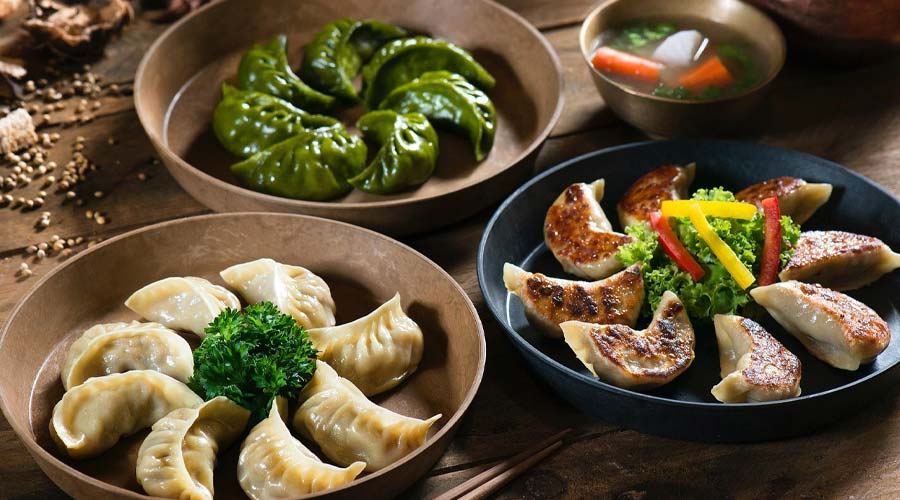
As a true traveler, it is almost impossible to not try the delicious local cuisines of every destination that you visit. Thankfully, the people of Tibet have excellent culinary skills due to which the dishes are worth trying.
Most Tibetan dishes revolve around dumplings and noodles. The meat used is either goat or yak. However, note that Tibetans don’t eat fish as fish is one of the Eight Auspicious Symbols of Buddhism!
When it comes to taste, the cuisine is heavily influenced by Nepal and Bhutan, instead of China. There are fewer vegetables and spices but you will also get an extremely spicy chili sauce alongside every dish!
Given below are some of the must-try and authentic Tibetan dishes:
- Tsampa
Tsampa is one of the most versatile dishes of Tibet. It’s also a staple food for many Tibetan households due to the ease and convenience of making it.
Traditionally, Tsampa is a type of flour made out of crisp roasted barley. You can pair it with anything and eat. For instance, the locals add butter tea and cheese to Tsampa to form a delicious dough. Then, it is turned into dumplings which you can eat while drinking tea on the side!
- Tibetan Noodles
Unlike China where rice is the staple food, Tibet thrives more on noodles. So, you can find noodles in various dishes there.
One of the most famous noodle dishes is Thukpa – a type of noodle soup that can provide warmth in the cold climate there. You can also try the famous spicy and sweet noodle dish – laping.
- Tibetan Momos
You may have already heard of momos and well, Tibet is the birthplace of this scrumptious dish.
Tibetan momos are a form of dumplings with fillings inside. The fillings can either be of vegetables or meat. Most momos are steamed but you can also find fried varieties or soup-cooked ones.
These refreshing dumplings come with a hot dipping sauce (or chutney) which is definitely a must-try.
- Yak Meat
Unlike other places in the world, Tibet relies more on Yak meat. Yak meat has a similar taste and texture to beef but you can consider it more tender, juicy, and delicious. So, if you don’t mind, try out some Yak meat-based dishes here.
- Sho
If you’re a yogurt fan, you ought to try Sho or the Tibetan Yogurt. This delicacy is made out of Yak milk instead of the traditional cow milk. Hence, it has a more buttery and creamier texture as compared to normal yogurt.
As the taste is slightly overpowering, many people prefer adding more sugar to it. Then, you can have it alone or with rice as well!
Apart from these dishes, you can also try out dishes like Chebureki, Gundain, and Khapse or beverages like Chhaang, Ara, and Butter Tea.
Final Thoughts
Tibet is a region full of diverse history, unique traditions, culture, and heritage. So, if you get a chance to visit this spiritual region, hidden from the modern world, don’t hesitate! You might even discover yourself through your Tibetan journey.
